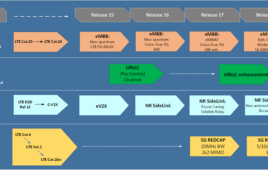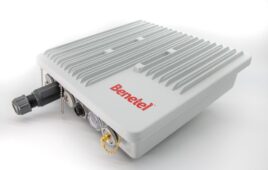For some time now, I’ve been trying to figure out why, after years of obsessive speculation, the arrival of the iPhone 4 at Verizon Wireless doesn’t seem, well, like as big a deal as it should.
Sure, the carrier sold more phones on launch day than any other first-day launch in its history. That’s a big deal. Verizon withstood the weight on its systems without any major glitches that I’m aware of. But it still seems like the whole thing deserves more fanfare than we’re seeing. I mean, after all, a lot of people, self included, spent a lot of time pondering what would happen. You know, like a thunderbolt should descend.
Of course, there are a lot of other things vying for attention, not the least of which is Verizon’s continued LTE rollout, including the HTC ThunderBolt, and more broadly speaking, that massive $39 billion acquisition proposed by rival AT&T for T-Mobile USA. Maybe being obsessively speculative about what might happen is more thrilling that what’s actually happening. Or expectations for Verizon’s iPhone sales were set and matched. Or so many other Android competitors, as well as iPads and other tablets, are conspiring to dim the buzz, not to mention all the rumors and innuendo about the next iteration of the iPhone.
We haven’t yet seen first-quarter tallies that will give us an indication of how many AT&T customers might have bailed for Verizon. When that happens, it might be a “wow” moment. A few days ago, comScore said the iPhone on Verizon was the most acquired handset in the month of February; the general market launch of the device was Feb. 10. (AT&T reports first-quarter results on April 20; Verizon is due to report on April 21. For good measure, Motorola, which got a bump from the Droid franchise at Verizon, reports April 28.)
A new ChangeWave Research survey this week gives some indication of what’s going on between the two carriers, which is to say, not all that much. In terms of overall satisfaction of the two iPhones, it’s virtually indistinguishable, the firm says. The ratings shows 82 percent of Verizon iPhone 4 customers are saying they’re “very satisfied” while 80 percent of AT&T iPhone 4 customers say the same. That’s close. The survey involved 4,068 consumers and was completed March 28, several weeks after Verizon began offering the iPhone 4.
ChangeWave does note, however, that dropped calls are a pretty big issue for AT&T customers. AT&T has trailed Verizon in that category since ChangeWave began surveying on the subject in September 2008.
A ChangeWave survey in December 2010 noted that AT&T had registered a significant improvement on this score, and the latest survey shows AT&T subscribers’ overall dropped call rate improved, if only a little bit, from 4.7 percent to 4.6 percent, among the 1,264 AT&T subscribers surveyed. The overall dropped call rate among the 1,283 Verizon subscribers surveyed is now at its lowest level ever recorded in a ChangeWave survey – 1.4 percent. That’s, uh, “kind of” a big difference.
The research firm duly notes that Verizon is still in the early stages of its iPhone offering, and it remains to be seen how well the Verizon network performs as the number of iPhone 4 owners ramps up on its network. For their part, Verizon executives, cool and confident, have given no sign that they’re even a little bit worried about the traffic volume.
What’s really interesting in ChangeWave’s survey is the number of people who plan on buying an iPhone 4 in the future – most say they’ll use Verizon – 46 percent versus 27 percent who would choose AT&T.




